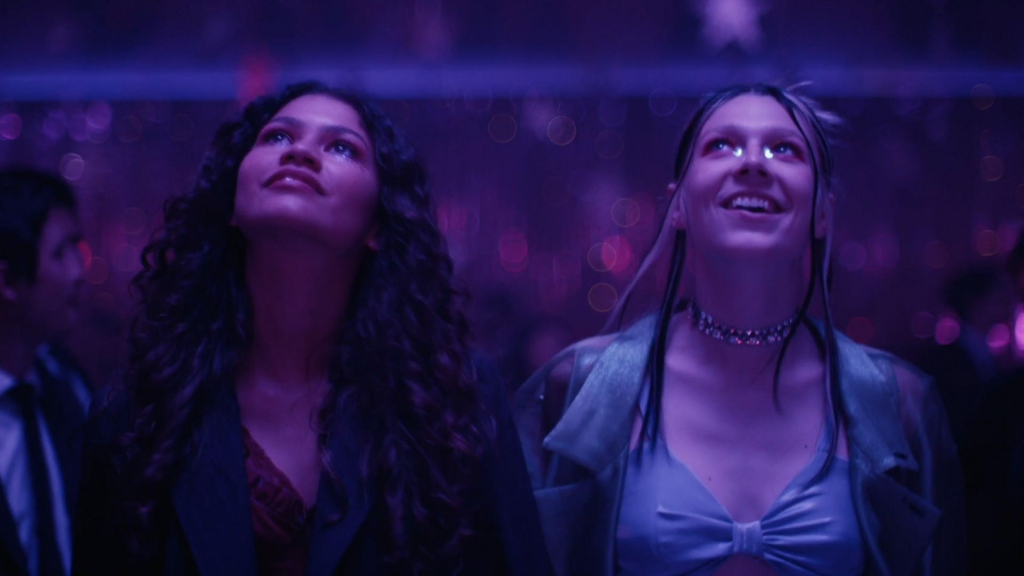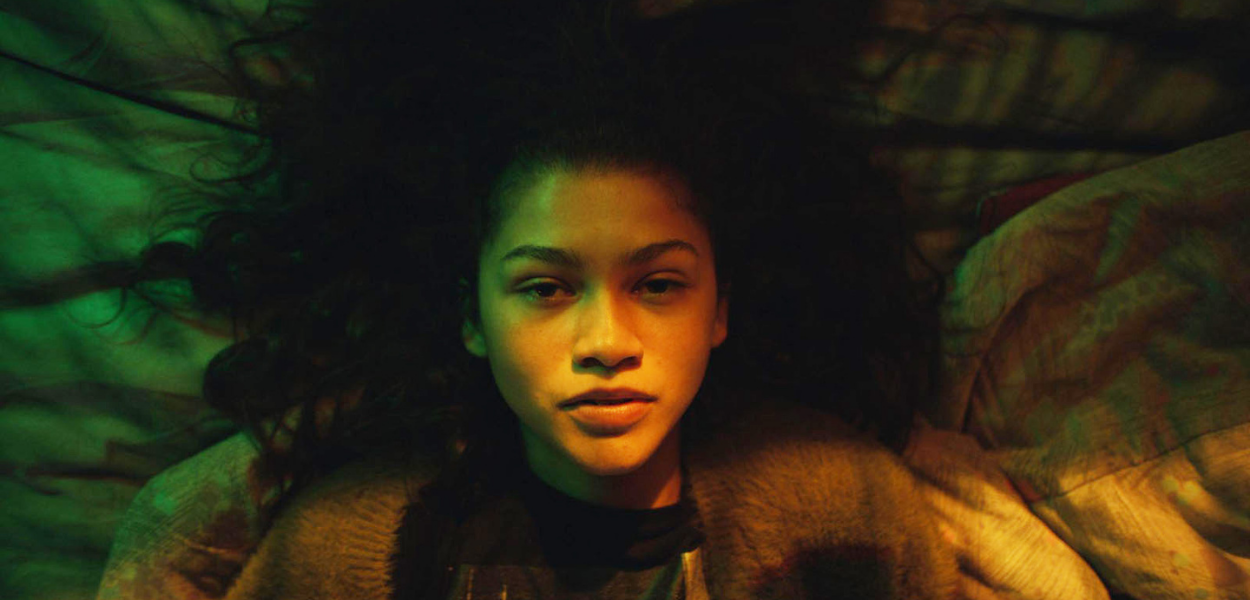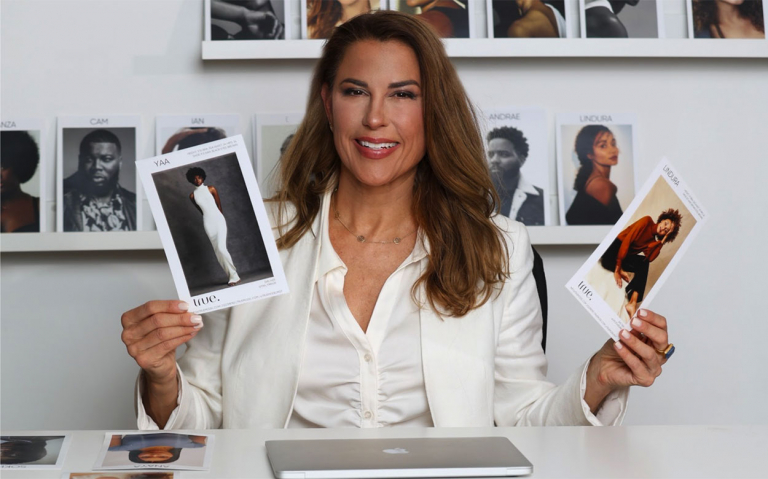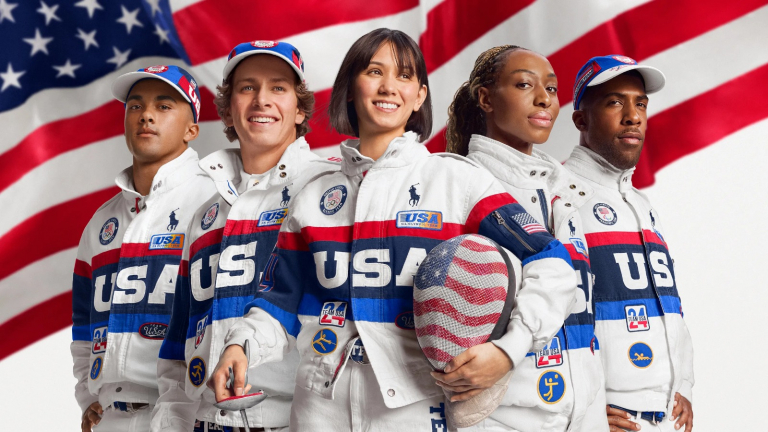Euphoria, a show about a teenage girl struggling with drug addiction, has come to shake culture to its very grounds. It has joined the rare group of TV shows which have spurred cultural shifts. Amongst them are the likes of Sex and the City and Seinfeld. But perhaps in an unparalleled manner, Euphoria’s first season quickly produced trends that found their way to the runway.
Euphoria Impact
The show’s impact is even visible on TikTok, with #euphoriahigh collecting a whopping 44.4 million views on the app.
It’s hence natural that the series’ long-awaited second season spurred the release of ardent reviews. Remarkably, Euphoria is known for its shock value, and this latest season did nothing but amp it up a notch. Its first episode features male nudity, a toddler eating cigarette buds, a ditzy heroin addict and a blood-spilling fight.

Nevertheless, criticism of the show seems to miss an important fact: most of its main characters are women. Though that might not seem particularly relevant, the sheer size of Euphoria’s influence makes it so. The series’ intended audience is teenagers about 17 years of age. We’re talking about highly impressionable people, whose perception of the world is shaped by the media.
Hence, one might wonder: how does Euphoria portray women, visually and textually? And what impact might that have on general culture? What is it that happens when ugliness is presented through glamour? Here is an attempt to make sense of it all.
Skimpy Outfits Galore
Amongst the things Euphoria is known for is its fashion. Indeed, multiple Instagram accounts have undertaken the task of tracing each outfit back to its origins, allowing fans to find them. And there is no denying that costume designer Heidi Bivens has done her job and done it well. In fact, she is single-handedly responsible for the loud cut-out two-piece trend. The originals completely sold out after Maddy wore them in season one, episode four.
Yes, the two-piece was gorgeous. But it seems we have been so caught up in the aesthetics that we forgot to ask. Why exactly would Maddy—mind you, a 17-year-old—wear cut-out pants to a town carnival?

Now, this is not meant to imply that the show’s fashion is not aligned with the evolution of its characters. Surely, Bivens has gone to incredible lengths to reflect the characters’ state of mind through their sartorial choices. Take, for instance, her decision of making Jules’ style like that of Elliot and Rue to reflect their close relationship. In the case of Maddy, her revealing outfit might be understood as a rebellious act against her controlling boyfriend.
So this is not a question of coherence between narrative and costume. It’s more than that. Consider, the concept of the male gaze in film. The male gaze refers to the continuous catering to male audiences by the media. Female characters in the film are hence subjected to such a gaze. They are sexualized and portrayed as subservient through camera angles, costume choices, and storylines.
Under such a light, the costumes in Euphoria seem a little less innocent. Sure, a character’s storyline might justify their revealing outfits. But the truth is that TV shows have a responsibility outside of storytelling. Especially today, with TV trumping film as the most impactful form of entertainment.
The Current Scenario
Today’s most influential series features teenage girls in revealing outfits in contexts in which they would never wear them. At school, at a carnival, at the mall. What message is that really sending? Is it encouraging teenagers to dress provocatively? If so, who is that meant to please? Is it reinforcing the trope of the Lolita—the promiscuous teen who is to blame? Or is it, perhaps, simply putting up with the sexist standards of Hollywood?
It’s worth pointing out that these questions are in no way denying or countering the idea that wearing revealing clothes can be a way of claiming ownership over one’s own body. It can surely be empowering. Nor are these implications denying that some characters, like Lexi and Rue, dress more realistically in relation to their age.
Still, context is important. The outfits audiences emulate the most are not those of Rue and Lexi. Plus, these are teenage girls we are talking about. Does TV really need to ‘teach’ girls to cater to the male gaze? Is this really what we need?
Nudity As Subversion?
Another thing Euphoria is known for is the shocking frequency with which nudity appears on the screen. It’s as if there was at least one nude scene per episode. And once again, for a teenage drama, that is worrying, for a number of reasons. But let’s stay on the topic of gender for now.
Because Euphoria doesn’t only feature female nudity. It also includes male nudity. And lots of it. Certainly, after the infamous scene of the thirty penises in season one, some accused the show of utilizing nudity for shock value. Others, however, saw beyond that.
In a world full of female full frontals, what does it mean to show a penis on screen? Perhaps obviously, this is an inherently rebellious act. Female nudity is extremely common in entertainment because the female body is seen as something to be sexualized and consumed. But male nudity has always been rarer, as men are exempt from widespread objectification in the media.
So the proliferation of both female and male nudity on Euphoria attempts to balance a phenomenon that has been eschewed since the very beginning. And that’s great. Nevertheless, the show somewhat undoes its own efforts. For it’s not only about nakedness but also about its context of it.
Man x Women Nudity
If one analyzes the moments in which women’s nude bodies appear on the screen, it’s mostly in sexual contexts. On the other hand, penises appear in mostly non-sexual contexts. And if they are sexual contexts, they are not the object of desire like breasts are. Rather they debase their owner, they ridicule him.
For example, take two of the most prominent penis appearances of season two. The first in the first episode and the one in the third. In the former, Fezco’s grandmother shoots a man while he is in the midst of a sexual act. We see his blood-splashed penis and it does not invoke any sort of erotic desire, but disgust and ridicule. In the latter, Cal goes back to his home after an all night bender. He pees all over the house’s floor as all members of the family come out to see him. Again, the effect is not that of eroticism. Instead, Cal seems pathetic and sad.
So, while attempting to balance the unequal nature of nudity in entertainment, Euphoria somewhat reinforces it. But there is no denying the effort goes much further than most. It brings an issue to the table which had long remained unvoiced.
Teenage Housewives
TV shows aren’t only about images. They are also about storylines. And boy, oh boy, are there some strong storylines in Euphoria. Rue struggles with drug addiction. Nate and Cal grapple with their sexual orientation. Kat attempt to overcome self-hate. Jules navigates both her relationship with Rue and her femininity as a trans woman.
Indeed these cover miscellaneous themes, and one cannot really trace a common theme except for that of teenage life. This is very positive, especially considering that it highlights issues which often remain in the dark. But what about the characters of Cassie, Maddy and Lexi?
Maddy’s storyline was particularly prominent in season one. She greatly struggled with letting go of an extremely—and extremely might be an understatement—abusive relationship. Cassie was less prominent, but her constant need for external validation was important. Then in season 2 the roles reversed, and Cassie was the one in the toxic relationship with Nate and Maddy was trying to evolve.
Lexi was on the sidelines for the whole of season one, but then came to the forefront in season two with her play. It put a particular emphasis on her rivalry with her sister Cassie. And the theme of competition was also important in terms of Maddy and Cassie, both of them having a history with the same man.
See a theme here?
Well, it seems that writer Levinson decided to give particular eminence to plots which reinforce stereotypes. The show pits women against each other—not in one scenario, but two. It portrays women—Cassie and Maddy—who almost exclusively care about looks and men. Others are reduced to helpless victims against the big bad men of the world (Cassie). And the Latina with anger issues (Maddy) is also in the mix.
Certainly, these are very simplistic ways of describing the stories. It’s all more complex than that. Cassie’s need for validation comes from her fear of abandonment, stemming from her father leaving. Maddy stands up to Nate again and again. And the rivalry amongst Maddy and Cassie and Cassie and Lexi does not trump their love for each other.
Nonetheless, it is quite honestly staggering that a TV show about teenagers chooses to expand upon such themes. Especially when these subject matters are usually covered by the likes of Desperate Housewives and Little Big Lies. Why are teenage girls having issues that are usually associated with domestic dramas?
Could it be that Euphoria truly believes these are the quintessential problems of the teenage girl? It’s not really clear. And the fact that it portrays so many experiences suggests otherwise. But putting emphasis again and again on the previously mentioned storyline crystallizes the little box women are put in. Once again, it reinforces stereotypes and digs them deeper into the ground.
The Impact
Now, all of this would not matter if only a few people were watching Euphoria. But it’s the second most-watched series in TV history. So what it says is important.
Moreover, the almost-perfect aesthetics of the show makes it all the more dangerous. Shot in film, Euphoria’s second season is filled with breath-taking cinematography. Debauchery never looked better. And that might be the problem.
When bad things seem beautiful, one is even more drawn to them. So if the mentioned manifestations of the male gaze all look so good, what’s stopping the audience from internalizing them?
Want know more about fashion world? FASHINNOVATION!






